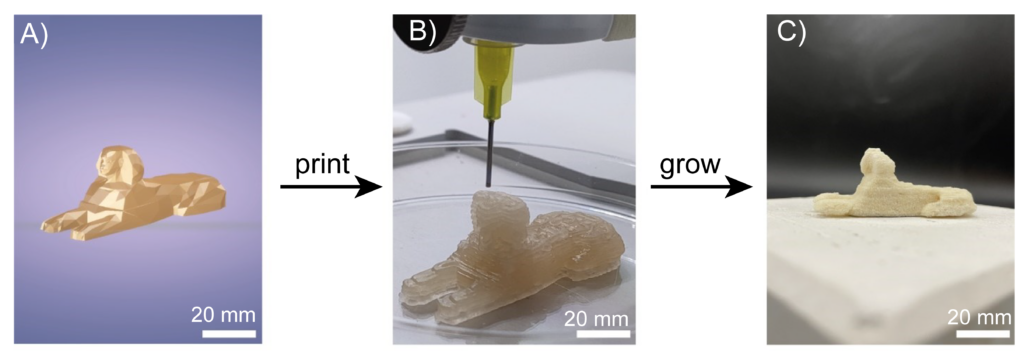Responsive soft materials
The fabrication of responsive soft materials that enable the controlled release of MICP would be highly desirable for the creation of living materials that can be used, for example, as self-healing construction materials. We have demonstrated that the amount and location of CaCO3 produced within a matrix, can be controlled through the concentration and location of bacteria; these parameters can be precisely tuned if bacteria are encapsulated biocompatible hydrogels. With this novel use of hydrogel encapsulation of bacteria for on-demand release of MICP, we achieve control over the amount and structure of CaCO3-based composites. These composites thus have the potential to sense, respond, and heal without the need for external intervention.

Clarà Saracho, A.; Lucherini, L.; Hirsch, M.; Peter, H. M.; Terzis, D.; Amstad, E.; Laloui, L. Controlling the Calcium Carbonate Microstructure of Engineered Living Building Materials. J Mater Chem A Mater 2021, 9 (43), 24438–24451. https://doi.org/10.1039/D1TA03990C.
Bioprinting
The printing of hydrogel and polymer encapsulated bacteria, has made rapid strides in the last decade with numerous methods developed to print encapsulated cells in a rapid manner. Extrusion bioprinting provides a versatile avenue for printing a variety of shapes using a number of materials (including soft microgels) and recent progress has allowed for high survival of living cells through the extrusion process and novel properties of printed gels. For example, we have introduced a bacteria-containing microgel-based ink that can be 3D printed into cm-sized structures that are subsequently mineralized, resulting in hard CaCO3-based composites possessing up to 93 wt% of minerals.

Hirsch, M.; Lucherini, L.; Zhao, R.; Clarà Saracho, A.; Amstad, E. 3D Printing of Living Structural Biocomposites. Materials Today 2023. https://doi.org/10.1016/j.mattod.2023.02.001.
